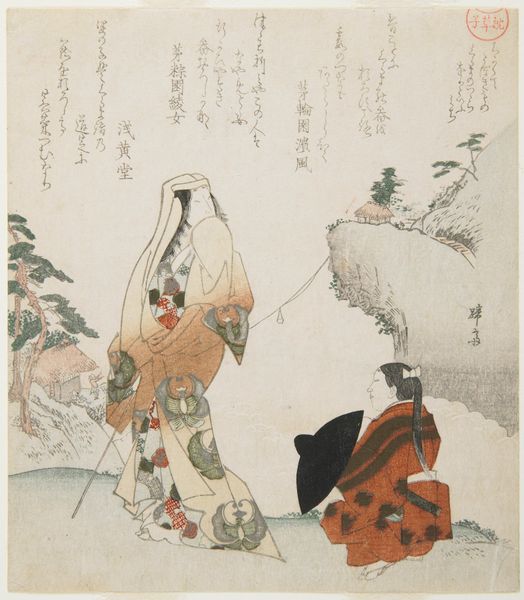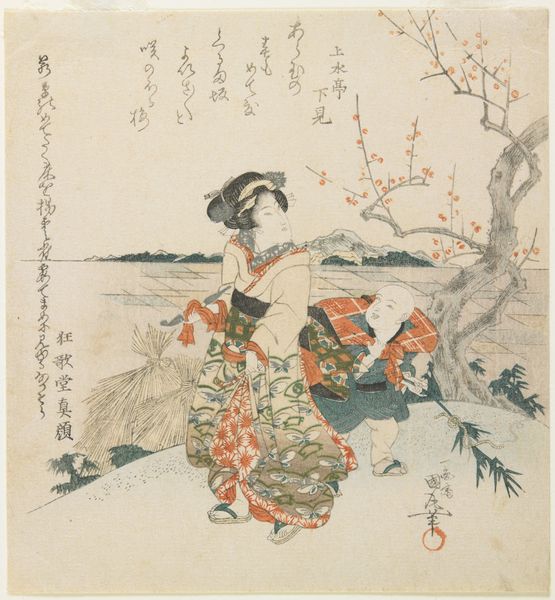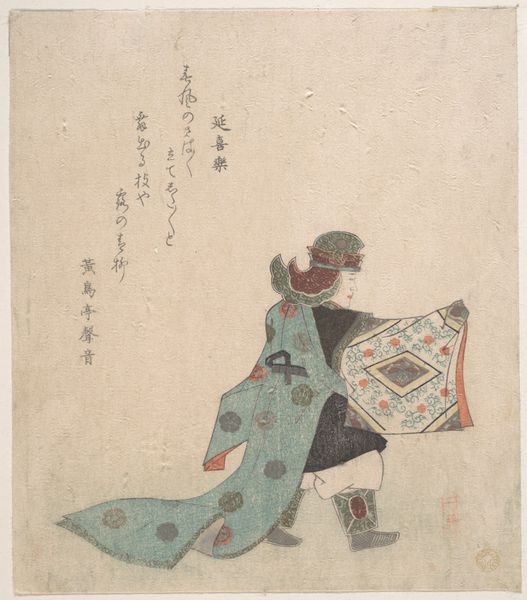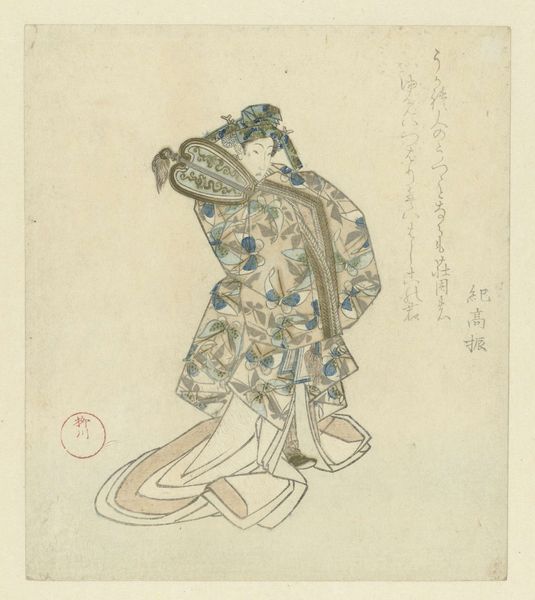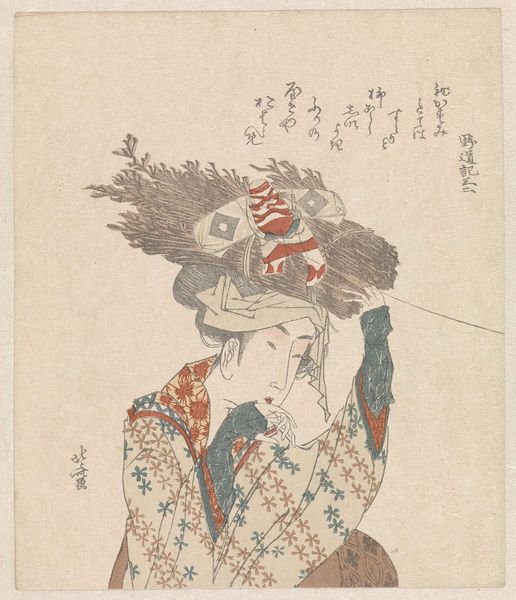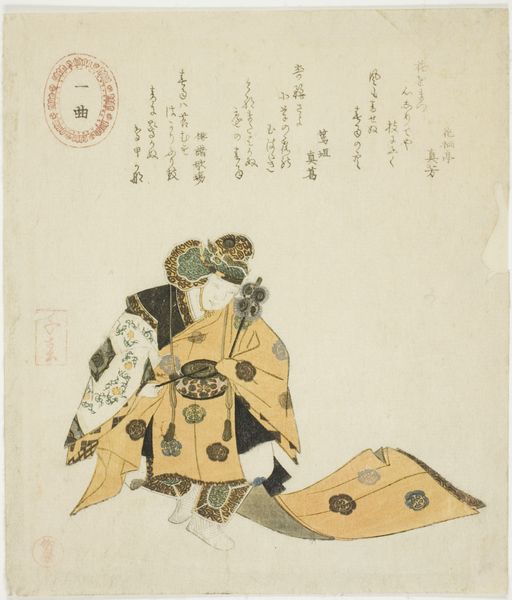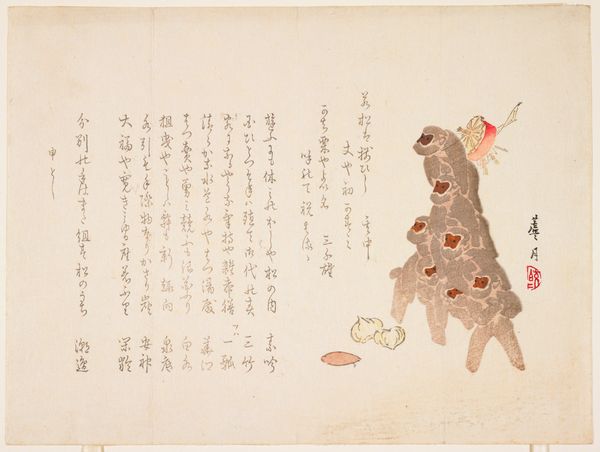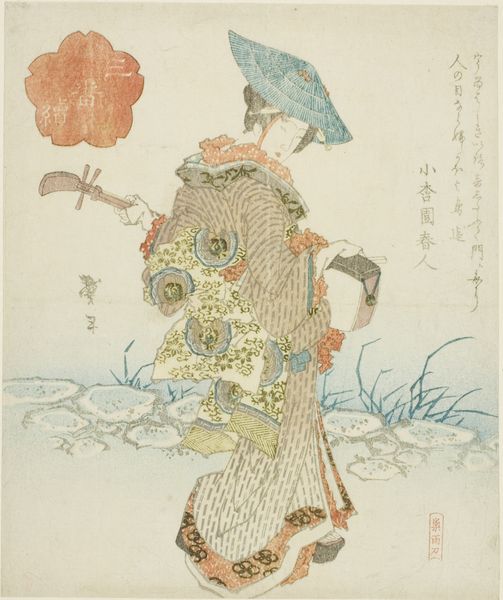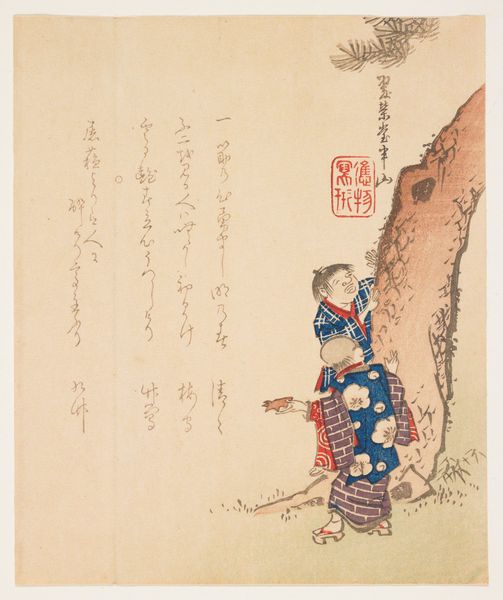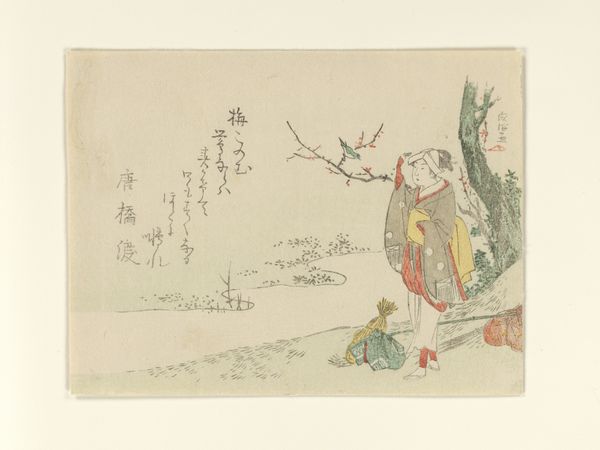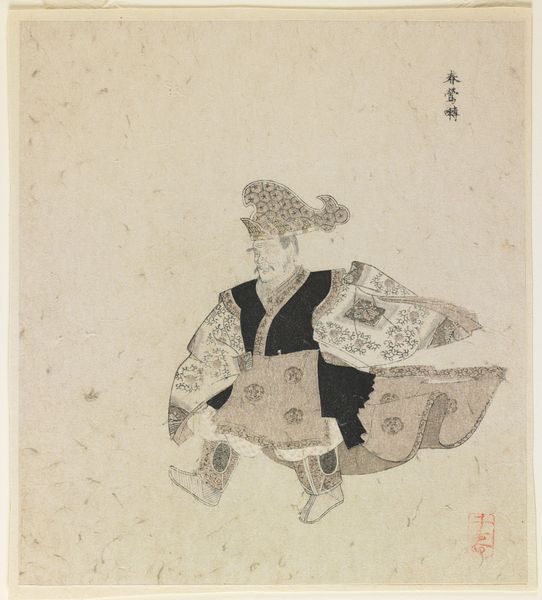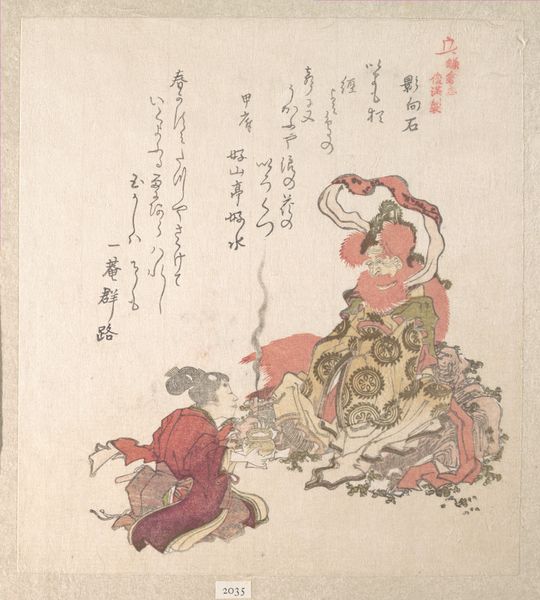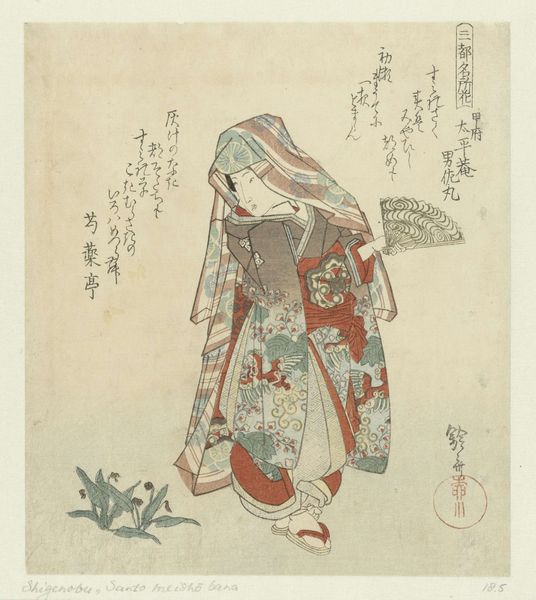
print, ink, woodcut
#
narrative-art
# print
#
asian-art
#
etching
#
ukiyo-e
#
figuration
#
ink
#
woodcut
#
orientalism
Dimensions: 8 1/16 x 7 1/16 in. (20.5 x 18 cm) (image, sheet)
Copyright: Public Domain
Editor: This is “Korean Surprised at the View of Mt. Fuji,” a woodblock print from around 1830 by Katsushika Hokuga. The figure, seemingly frozen in place, appears captivated by something beyond the frame. What layers of meaning am I missing here? Curator: This print is part of a larger phenomenon: Orientalism. What seems like a straightforward depiction of surprise reveals complex power dynamics. What details stand out to you about the figure's portrayal? Editor: I guess, the subject's attire. It’s not just a kimono; it is very elaborate. Is the artist using that to depict an ‘outsider’ experience, making this more than just about a view? Curator: Precisely. The figure’s clothing and exaggerated reaction might play into stereotypes circulating in Japan at the time. Consider who commissioned this piece, and what assumptions they might have held about Koreans, or about the act of viewing Mt. Fuji. Do you think it might reinforce existing societal views? Editor: It’s kind of unsettling to think that this seemingly innocent image could contribute to stereotypes and reinforce power structures. It also makes me consider what expectations are placed on 'outsiders' visiting famous sites. Curator: Indeed. This image served a public function. It subtly shaped perceptions within its cultural and historical context. Examining these works encourages critical examination of the images and representations we consume today. Editor: Wow, I didn't expect to see so much in what I thought was a simple print. I will definitely examine it with a different mindset from now on. Curator: Absolutely! Seeing art as a cultural artifact is crucial for any in-depth understanding, especially when issues of representation and cultural exchange are concerned.
Comments
No comments
Be the first to comment and join the conversation on the ultimate creative platform.
